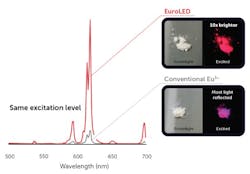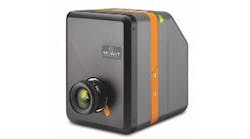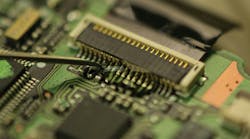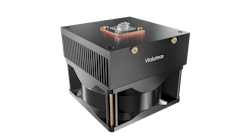On Thursday, March 21st, Seaborough will present a fundamentally new approach for developing LED phosphor materials at the Phosphor Global Summit in San Diego, California. Up until now, the tradeoff between efficiency and color rendering has led to a tendency to choose LEDs with a “colder”, blueish light that have a high efficiency, but don’t always appeal to general consumers. This lack of popularity has endangered LED adoption and the energy savings that people are entitled to and can be prevented or reversed with Seaborough’s revolutionary new approach.
A consortium, initiated and led by Seaborough, has been awarded a 1 million EUR Eurostars subsidy to further develop this approach. Together with the Fraunhofer Institute, FGK, and MJR PharmJet, all based in Germany, Seaborough will use this technology to develop a Eu3+-material which can be efficiently excited in the blue. With this material, Eu3+ can be used as red emitter for LED applications for the first time. This would lead to illumination grade LEDs with large efficiency gains (energy savings of 15-20 %), while maintaining a very high color rendering index (color quality).
How does it work?
The new approach is based on a sensitization technique called “Interparticle Fluorescent Resonance Energy Transfer” (IFRET). In contrast to ‘conventional’ FRET, where both ‘‘absorber’ and ‘emitter’ ions are embedded in the same host material, the Seaborough approach is to separate the absorption and emission events by using separate materials. Using this approach, an absorber ion can be chosen independently of an emitter ion, opening up a whole new world of possible luminescent ion combinations which would normally quench when brought together in a single host material. Since IFRET only occurs when absorber and emitter ions are in very close proximity, it is crucial to bring the two materials very close together. Seaborough demonstrated that this can be done successfully by employing a nanoparticles approach.
In addition to Eu3+ materials, the technology offers the possibility to also independently engineer the absorption properties of other line emitters, like Tb3+ (green), Dy3+ (blue and yellow), Mn4+ (deep red), etc.. These kinds of emitter materials are not only interesting because of their very narrow emission lines at a very specific wavelength, but also because of their extremely stable color points. Unlike conventional phosphors, or direct-emitting LEDs, or quantum dots, the color points of such ion emitters are barely dependent on environmental changes like temperature. This makes them interesting candidates for other uses as well, such as automotive and biomedical applications.
For more information
Marcel Verhoeven
[email protected]
Cruquiusweg 111-C
NL 1019 AG Amsterdam
The Netherlands
www.seaborough.com
+31 (0)6 28553950
About Seaborough
Seaborough is an R&D company with a strong in-house IP department and a business unit that markets LED solutions. Seaborough invents, develops, and commercializes groundbreaking innovations for the lighting industry. The company has a deep understanding of the current industry environment and possesses the drive, skills, and expertise to address these challenges. Seaborough aims to invent, develop, and market proprietary lighting technologies through patenting and licensing. It is committed to achieving a real and sustainable positive impact on the broader community by ensuring that its products help to reduce consumers’ carbon footprint. Seaborough employs leading LED experts and researchers. It has its own research facilities and develops solutions in its own laboratory. The company is backed by investors who share its vision and goals and who are committed for the long term. Seaborough is a 100% participation of Momentum Capital.
